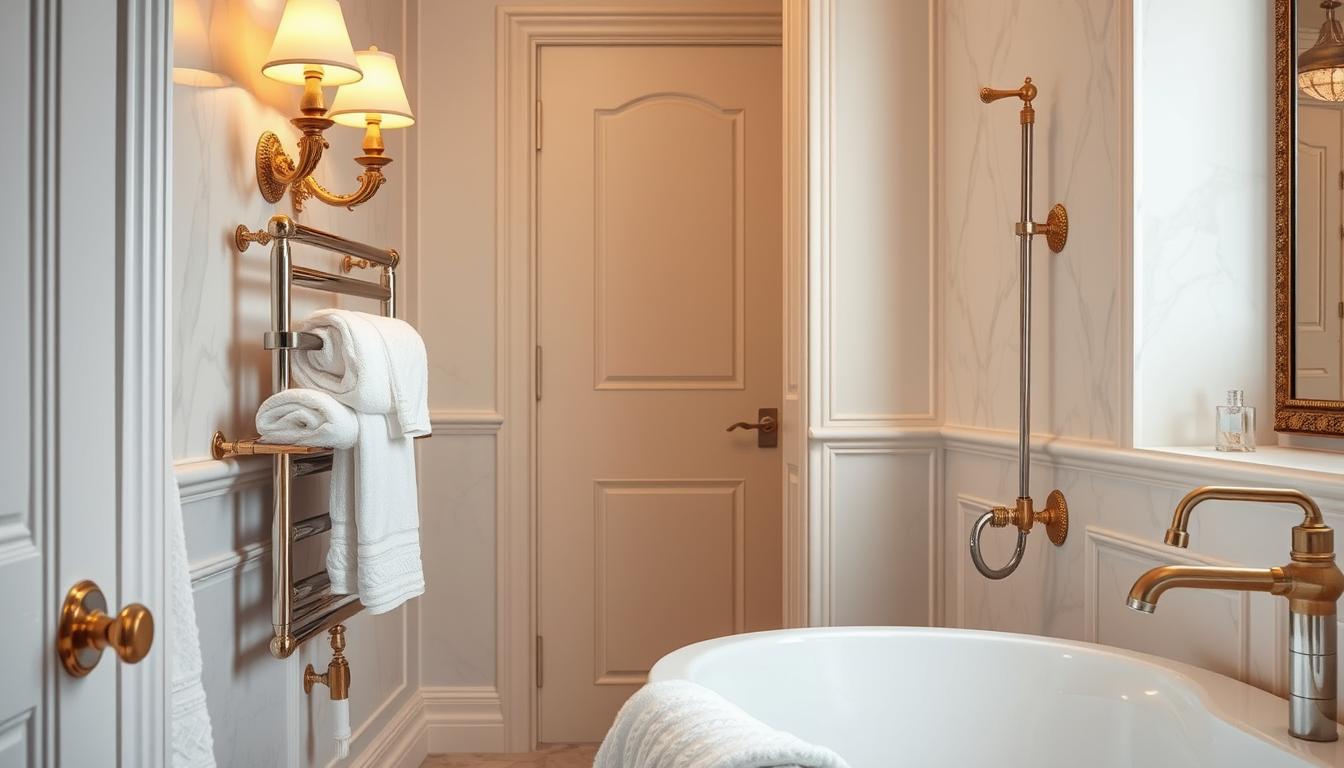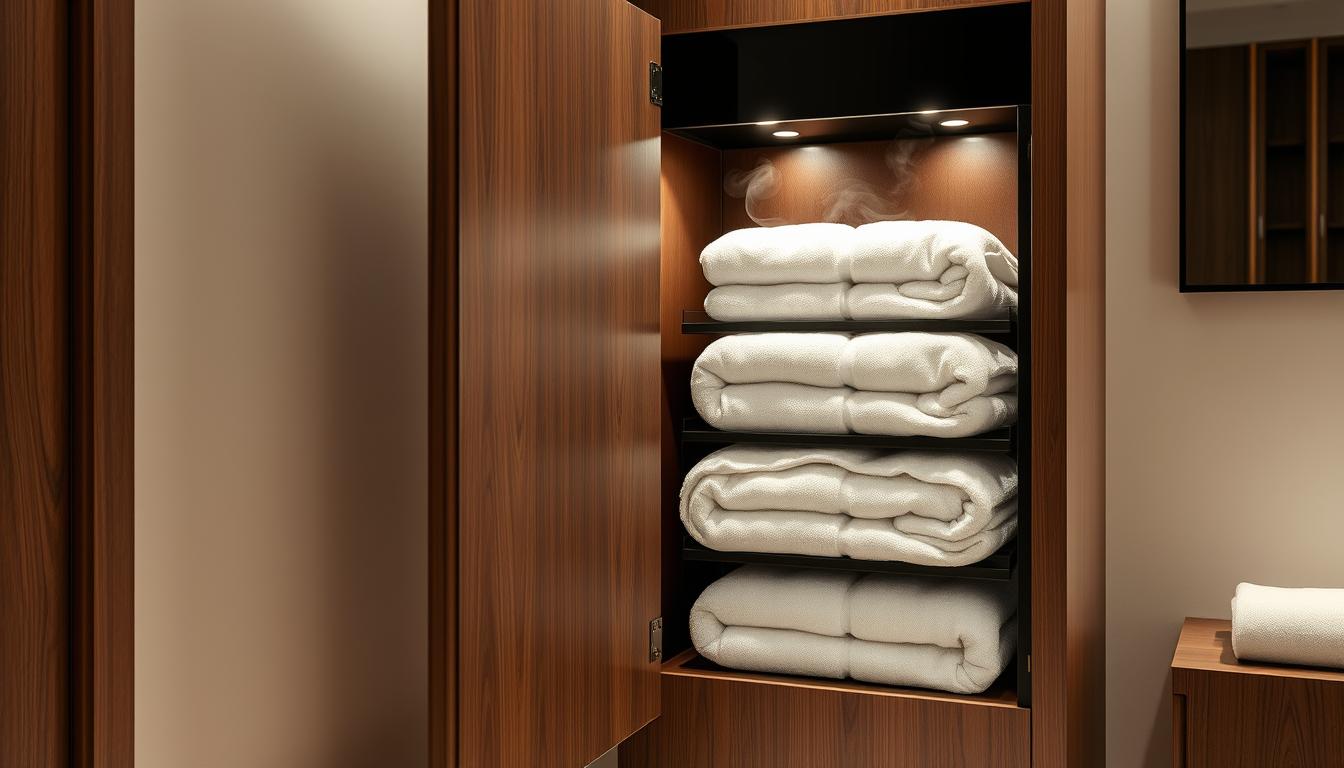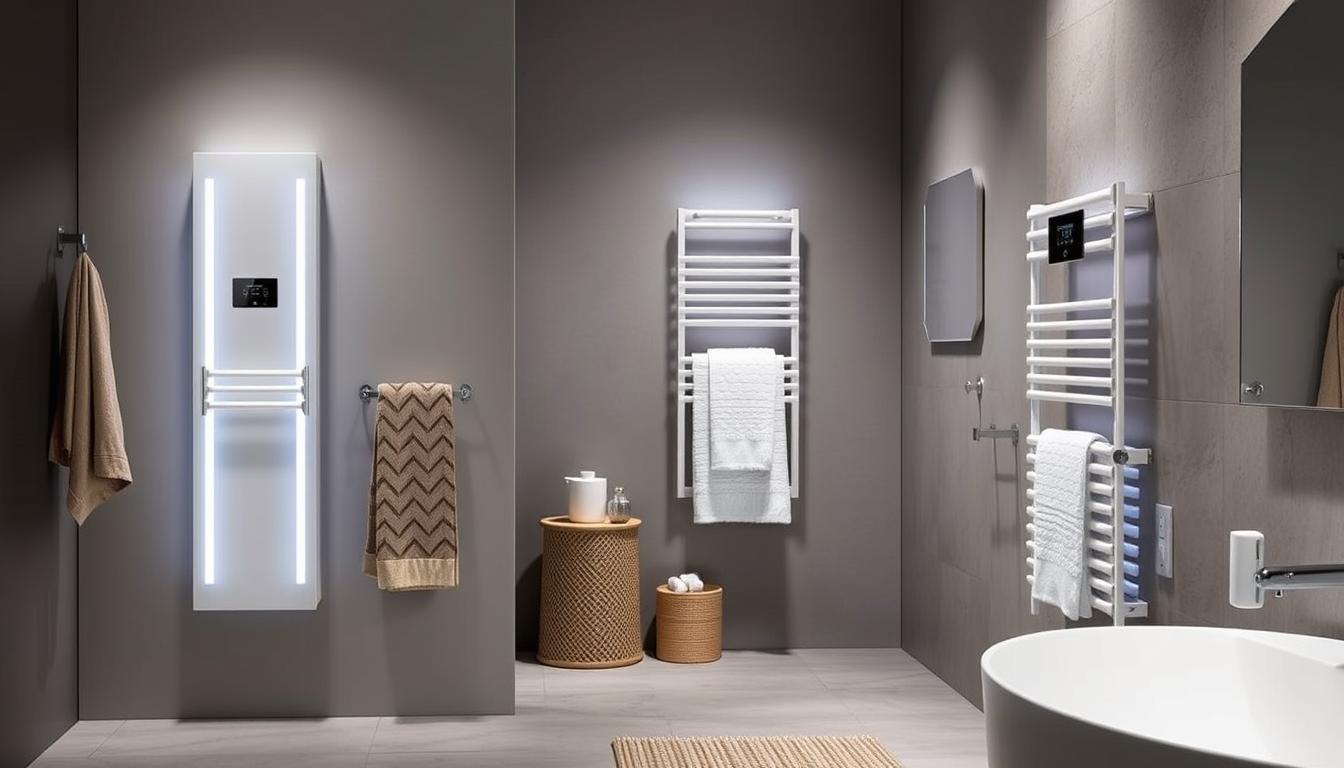Have you ever wondered how a towel warmer works? This bathroom accessory not only keeps your towels warm and cozy, but it also provides a radiant heat source for your bathroom. Let’s explore the functionality of towel warmers and learn how they can enhance your bathing experience.
A towel warmer can be wall-mounted and operates using a heating element or hot water circulation system. The heating element or circulation system generates warmth, ensuring your towels are always nice and toasty when you reach for them. The temperature of the towel warmer is regulated by a thermostat, allowing for efficient and controlled heating.
Towel warmers are designed not only to warm towels but also to dry them quickly. This feature reduces the need for frequent towel laundering and helps prevent musty smells. Imagine stepping out of the shower or bath and wrapping yourself in a warm, freshly dried towel!
Some towel warmers resemble radiators, while others have a sleek, modern design. Regardless of the style, towel warmers are known for their energy efficiency. They provide warmth without consuming excessive energy, making them a great addition to any bathroom.
Key Takeaways:
- A towel warmer uses a heating element or hot water circulation to generate warmth for your towels and bathrobes.
- It is regulated by a thermostat for efficient and controlled heating.
- Towel warmers also have a drying function to quickly dry your towels, reducing the need for frequent laundering.
- They come in various styles, including radiator-like models, and are known for their energy efficiency.
- A towel warmer adds a touch of luxury and comfort to your bathing experience.
Benefits of Using a Towel Warmer
Using a towel warmer offers several benefits. Firstly, it provides warm towels and bathrobes, adding a touch of luxury to your bathroom experience. By drying towels after each use, towel warmers help reduce laundry and water consumption. They also prevent the growth of mold and mildew, keeping your towels fresh and odor-free. Some models can even function as space heaters, effectively warming up the bathroom during colder months. Additionally, towel warmers come in various designs, enhancing the aesthetic appeal of your bathroom.
Towel Warmer Types and Operation
When it comes to towel warmers, there are two main types to choose from: hydraulic and electric. Each type operates differently and offers unique features to enhance your bathroom experience.
Hydraulic Towel Warmers
Hydraulic towel warmers are connected to the main heating system of your house. They utilize the existing hot water circulation to generate heat and warm up your towels. These towel warmers can be adjusted using a dedicated knob, allowing you to control the temperature and customize your warmth. With their efficient heating mechanism, hydraulic towel warmers provide a consistent and reliable source of warmth.
Electric Towel Warmers
Electric towel warmers, on the other hand, rely on an electric heating element to generate heat. These towel warmers can be easily plugged into a power outlet and are ready to use. They often come with additional features such as an on-off switch, thermostat for temperature regulation, or even a timer for automatic control. Electric towel warmers offer convenience and flexibility in operation, allowing you to easily adjust and personalize your towel warming experience.
Both hydraulic and electric towel warmers are effective in providing the warmth and comfort you desire. The choice between the two ultimately depends on your preferences and the existing infrastructure of your bathroom.
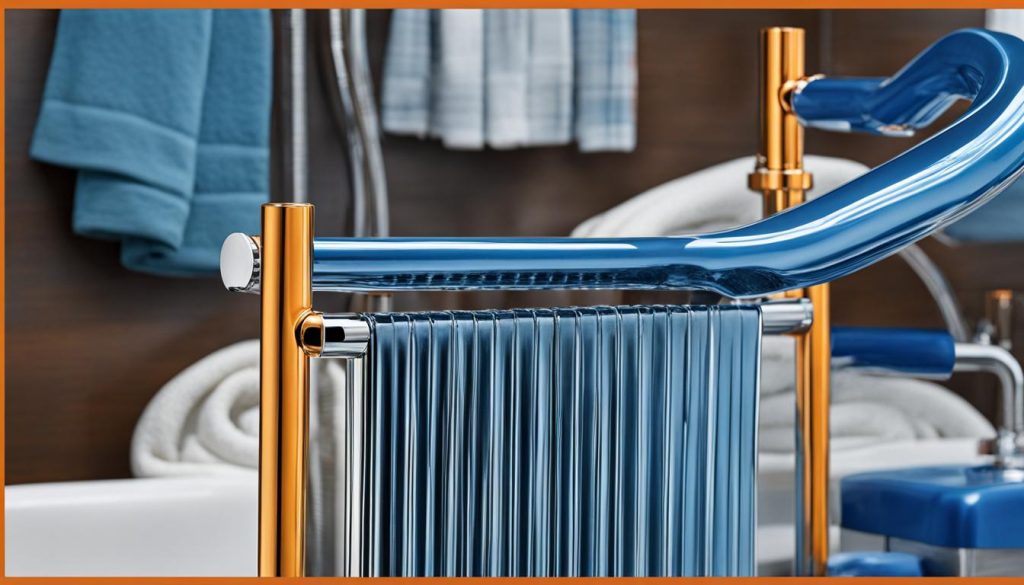
| Type | Heating Mechanism | Power Source | Additional Features |
|---|---|---|---|
| Hydraulic Towel Warmer | Connected to the main heating system | Hot water circulation | Adjustable knob for temperature control |
| Electric Towel Warmer | Electric heating element | Power outlet | On-off switch, thermostat, timer |
Towel Warmer Placement and Design
When it comes to choosing the perfect towel warmer for your bathroom, placement and design are key considerations. Most towel warmers are wall-mounted, providing a convenient and space-saving solution. These wall-mounted models are fixed vertically on the bathroom wall, ensuring easy access to warm towels.
For added flexibility, some towel warmers offer a swivel feature that allows for a 180° rotation. This means you can adjust the position of the towel warmer to your liking, making it easier to hang and retrieve towels.
Alternatively, if you prefer a more versatile option, you can opt for a freestanding towel warmer. These towel warmers can be positioned and moved around as needed, providing the flexibility to place them wherever you desire in your bathroom.
When it comes to materials, you can choose between towel warmers made of steel or aluminium. Steel towel warmers are known for their durability, making them perfect for long-lasting use. They also allow for intricate designs, adding a touch of elegance to your bathroom decor. On the other hand, aluminium towel warmers heat up quickly, ensuring you have warm towels in no time. However, they are more delicate compared to steel models.
To match your bathroom’s aesthetic, towel warmers come in a variety of finishes and colors. Whether you prefer a sleek and modern look with a brushed stainless steel finish or a more vibrant and colorful option, there is a towel warmer to suit your style.
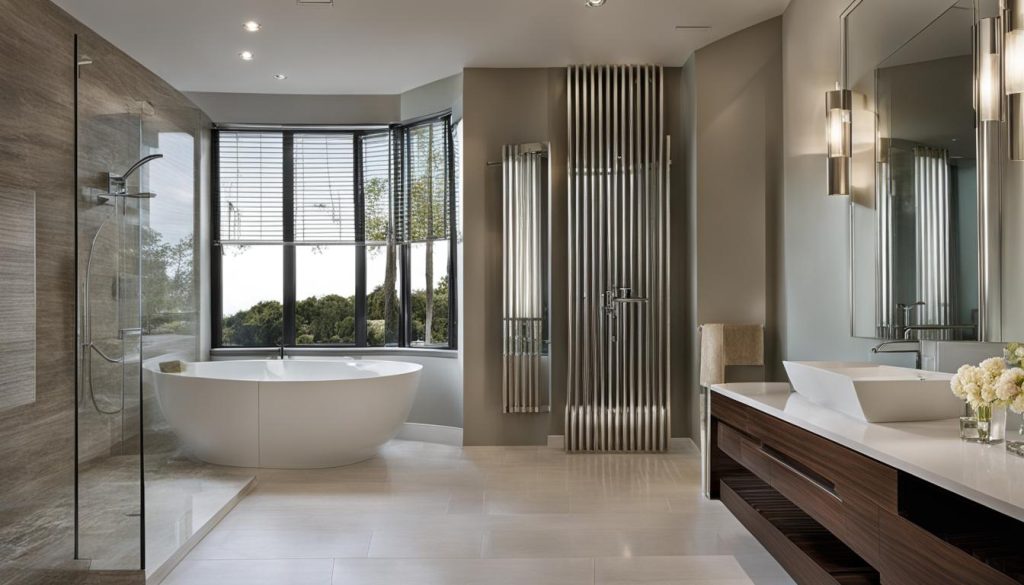
Towel Warmer Placement and Design Summary:
| Placement Options | Material Options | Finish and Color Options |
|---|---|---|
| Wall-mounted | Steel | Various finishes and colors |
| Swivel | Aluminium | |
| Freestanding |
Towel Warmer Accessories and Costs
To enhance the functionality of your towel warmer, there are various accessories available that can elevate your bathroom experience. Towel bars and hooks can be easily added to provide more hanging space and drying options for your towels and bathrobes. These accessories not only increase the utility of your towel warmer but also keep your bathroom organized and tidy.
If you have a towel warmer that operates on both hydraulic and electric systems, a mixed operation kit can be a valuable addition. This kit allows you to switch between the two modes, providing flexibility in how you use your towel warmer.
Precise temperature control is essential for optimizing the performance of your towel warmer. With a thermostat, you can easily adjust the temperature to your liking. Whether you prefer a toasty warm towel or a slightly cooler touch, a thermostat ensures that you get the desired level of comfort every time.
In addition to functionality, the design of your towel warmer is another important aspect to consider. Design knobs are available in various styles and finishes, allowing you to customize the look of your towel warmer to match your bathroom décor. These knobs not only add an aesthetic touch but also make it easier to operate your towel warmer.
When it comes to towel warmer costs, they can vary depending on several factors. The price of towel warmers is influenced by the model, material, and finish. In general, hydraulic towel warmers tend to be more expensive, with prices ranging from around $60 to over $500. On the other hand, electric towel warmers can be more affordable, making them a popular choice for many homeowners.
Investing in towel warmer accessories and choosing the right towel warmer for your needs ensures that you can enjoy the warmth and comfort of toasty towels while adding a touch of luxury to your bathroom.
FAQ
How does a towel warmer work?
A towel warmer uses a heating element or hot water circulation to generate warmth. It can be wall-mounted and is regulated by a thermostat for efficient and controlled heating. The towel warmer also has a drying function to quickly dry towels and reduce laundry loads.
What are the benefits of using a towel warmer?
Using a towel warmer provides warm towels and bathrobes, reduces laundry and water consumption, prevents the growth of mold and mildew, and can function as a space heater in colder months. It also enhances the aesthetic appeal of your bathroom.
What are the different types of towel warmers and how do they operate?
There are hydraulic towel warmers that are connected to the main heating system of the house and can be adjusted using a dedicated knob. Electric towel warmers use an electric heating element and can be operated through a power outlet. They may have an on-off switch, thermostat for temperature regulation, or a timer for automatic control.
Where can a towel warmer be placed and what are the design options?
Towel warmers can be wall-mounted, fixed vertically on the bathroom wall. Some models can also swivel, allowing for a 180° rotation. There are also freestanding towel warmers that can be positioned and moved as needed. Towel warmers are commonly made of steel or aluminium, with various finishes and colors available.
What accessories can be added to a towel warmer and how much do they cost?
Towel warmer accessories include towel bars and hooks to provide more hanging space and drying options. A mixed operation kit allows for hydraulic and electric usage. A thermostat ensures precise temperature control, while design knobs add a stylish touch. The price of towel warmers varies depending on factors like the model, material, and finish, with hydraulic models generally costing more than electric versions.
